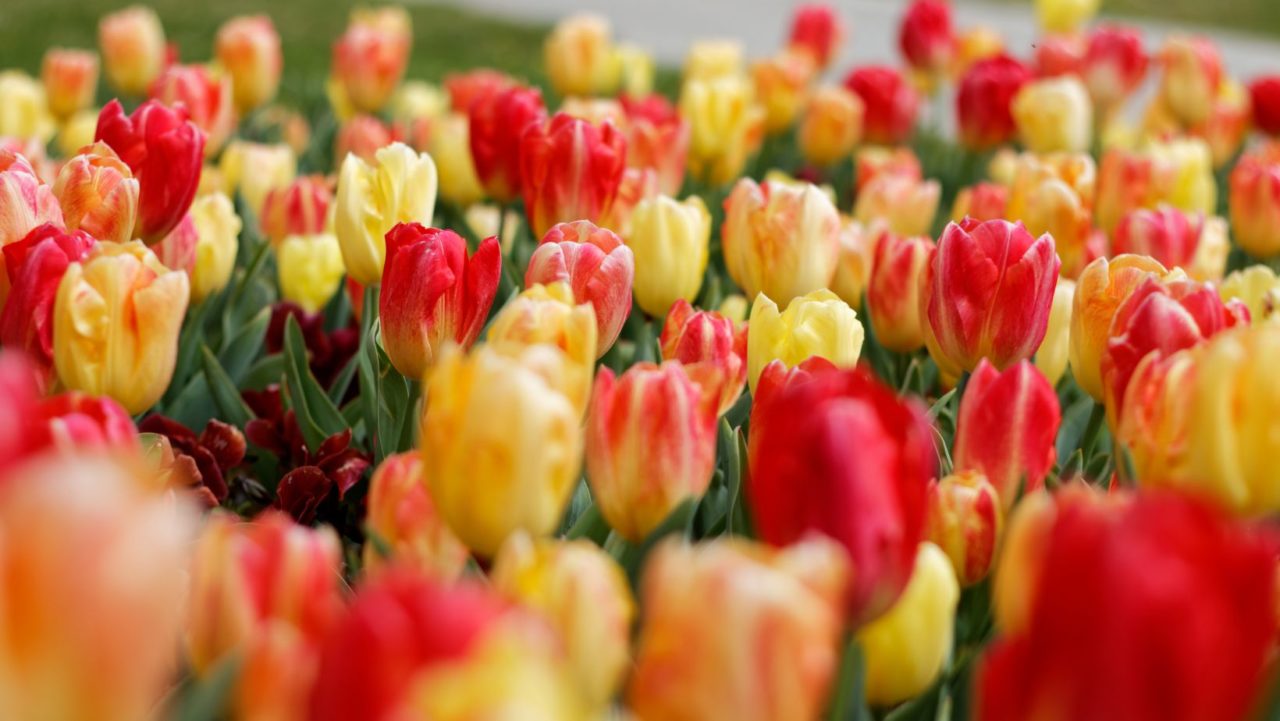Deadheading — trimming off spent flowers — helps your garden look clean, keeps bulbs and perennials healthy, and sometimes even sparks a second bloom.
In Cleveland’s spring climate, regular deadheading also reduces mold, deters pests, and preps plants for strong summer growth.
Let’s break down which spring flowers benefit most, how to deadhead each, and when to stop cutting so your plants stay strong year after year.
🌿 What Is Deadheading (and Why It Matters)
Deadheading is simply removing faded flowers before they turn to seed.
Doing this tells the plant to stop wasting energy on seed production and focus on root and leaf strength instead.
For some species, this can even trigger a second bloom. For others — especially bulbs — it’s all about recharging for next spring.
Pro Tip: In Northeast Ohio, start deadheading once about 75% of a plant’s blooms begin to fade. Don’t wait until petals fully drop — timing matters.
🌷 Best Spring Flowers to Deadhead
1. Tulips
-
Why: Keeps bulbs strong and prevents seed pods.
-
How: Snip off the bloom stem above the leaves. Leave foliage until it yellows naturally.
-
Mistake to avoid: Don’t braid or tie leaves — they need sunlight to recharge bulbs.
2. Daffodils
-
Why: Redirects energy to bulb health, not seed making.
-
How: Cut the flower stalk only. Leave green leaves for 4–6 weeks after bloom.
3. Columbine (Aquilegia)
-
Why: Encourages a second bloom and stops rampant self-seeding.
-
How: Clip stems right after blooms fade. Entire plants can be trimmed lightly after flowering.
-
Local note: Columbine reseeds easily in Ohio — deadhead if you want to control spread.
4. Bleeding Hearts (Dicentra)
-
Why: Keeps the plant tidy and can produce a smaller second bloom in cooler seasons.
-
How: Trim spent flowers; remove full stems once yellow.
5. Peonies
-
Why: Improves appearance and keeps energy in the roots.
-
How: Snip old flowers above the top set of leaves.
-
Tip: Sterilize shears between plants to avoid spreading botrytis blight.
6. Irises
-
Why: Prevents rot and disease from decaying flowers.
-
How: Cut flower stalks to the base after all blooms fade.
-
Aftercare: Divide crowded clumps every 3–4 years for best reblooming.
7. Salvias
-
Why: Cutting back spent flower spikes triggers new summer blooms.
-
How: Shear off the top ⅓ of the plant. Water lightly afterward to refresh growth.
8. Lungwort (Pulmonaria)
-
Why: Keeps the foliage healthy and reduces mildew.
-
How: Remove old flower stalks close to the crown.
9. Alliums
-
Why: Prevents self-seeding and keeps beds neat.
-
How: Clip blooms after they fade unless you enjoy their dried seed heads for texture.
10. Brunnera
-
Why: Aesthetic only — no performance change.
-
How: Remove brown stems to tidy up foliage.
🌾 Flowers You Shouldn’t Deadhead
Some spring bloomers rely on self-seeding to return:
-
Forget-me-nots
-
Poppies
-
Coneflowers (later season)
If you want a naturalized look or pollinator support, let these set seed instead.
🧰 Tools and Timing Tips
-
Use sharp, clean pruners or snips.
-
Deadhead in the morning or evening — avoid midday sun.
-
Wipe blades with alcohol between plants.
-
Compost the clippings unless they’re diseased.
🌞 Aftercare: What to Do Once You’re Done
After deadheading:
-
Water lightly to help plants recover.
-
Apply a thin layer of compost or organic fertilizer.
-
Mulch to lock in moisture and reduce weeds.
Pro Tip: Pair deadheading with weekly weeding — it’s easier to keep beds neat when both are done together.
🌼 FAQ: Deadheading Spring Flowers in Cleveland
Q: How often should I deadhead?
Check weekly from April through June. Most blooms only need trimming once per cycle.
Q: What happens if I don’t deadhead?
Plants may still survive, but bulbs and perennials will use energy on seed pods instead of roots — meaning weaker blooms next year.
Q: Can I deadhead after it rains?
Yes, but let flowers dry first to avoid tearing wet tissue.
Q: Can I deadhead by hand?
For soft stems like columbine or salvia, pinching works fine. For woody or thick stems, use snips.
Q: When should I stop deadheading?
By midsummer, once most spring bloomers are dormant or pruned for the season.
🌻 Conclusion
Deadheading is one of those small, satisfying jobs that pays off big — stronger plants, cleaner beds, and, in many cases, more flowers.
In Cleveland’s fluctuating spring weather, regular deadheading helps control mold, supports pollinators, and sets up your garden for an easy summer transition.
Whether you do it yourself or call in help, don’t let those fading blooms go to waste — a few smart snips now keep your garden thriving next year.

